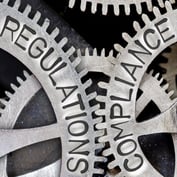Mining Free-Form Data Enables Better Customer Service
Recognizing that virtually any part of the information a company takes in may be critical in delivering better value and customer service, vendors are developing new technologies that enable companies to mine common text data that might otherwise be ignored.
According to San Mateo, Calif.-based Enkata Technologies, organizations today can evaluate and implement technologies that can mine and analyze “free-form text documents,” including customer service representative (CSR) notes, customer support e-mails and chat logs.
Free form text data is any information that is captured in a written formincluding notes in a call center, e-mail between an agency and its customers, and claims adjuster notes, says Josh Klaher, director of product management for Enkata. Such text may also include system-to-system generated text.
“When a call center agent picks up a phone and checks on a customers claim status, that transaction may include lots of information,” he explains.
Uncovering such data “provides a lot more context around the nature of the interaction with the customer,” says Klaher. The information enables a company to focus on customer interactions, which include any activities related to customer issues. Companies can then examine customer interaction for time-wasting patterns or other factors that may cause problems, he explains.
“For example, if you get repeated calls on the same claim, text mining builds a picture of these defective transactions,” says Klaher. “You may have CSR notes or claims adjuster notes that describe information about the claim. The CSR may record a note that says, customer disagrees with deductible, and this information may not be anywhere else.”
According to Klaher, mining such data “definitely helps you know your customer better, and it reduces costs by helping you figure out where to improve processes to reduce the number of contacts with customers, or how to encourage customers to perform self service.”
Companies may discover that only a certain type of claim is getting hung up, or that duplicate claims are being filed, he notes. Overall, the technology can help a company focus on root cause drivers of these problems.
“When you include information that is stored in text documents, it helps paint a much better picture of interactions and may reveal the smoking gun,” says Klaher. “If the dispute deductible problem shows up a lot, maybe youre not doing a good job of explaining how that works.”
Fixing such problems, he adds, improves customer satisfaction.
From an analytic perspective, however, it can be “pretty challenging to get at this data,” he notes. “A disputed deductible concept may be represented many different ways, so a simple keyword search wont work, especially if deductible is spelled four different ways.
“Text data is often ugly,” he continues. “It takes a long time to churn through and put that data into an analytical schema.”








 October 23, 2003 at 08:00 PM
October 23, 2003 at 08:00 PM










